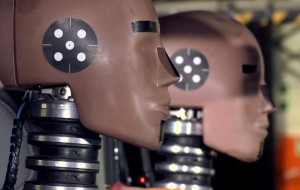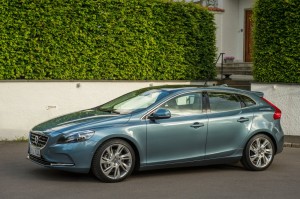Making car safety a priority
by Joanne Ahern • August 28, 2013 • Features, Motoring News
ABS, VSC, PA. They’re not as well known or as showy as SUV, USB and A/C but ultimately when you’re buying a car they’re far more important.
Anti-lock braking system, vehicle stability control, and pedestrian airbags are all safety features currently available in passenger cars which aim to make the road a safer place for both car occupants and pedestrians.
Car safety is generally not top of the list of things most people think about when buying a new car. Luckily minimum safety levels are not something consumers need to worry about in the EU.
Under European law, all new cars must reach a certain standard before they can be put on the market.
However, independent testing body Euro NCAP strives to encourage car manufacturers to put safety to the forefront and to exceed the minimum legal standards. Many manufacturers are taking on that challenge.
Car safety is all about saving lives and by 2020, the European Commission aims to cut the number of 2010 road deaths in the EU by half.
With this in mind, it has been introducing a series of new standard features required under European law.
From next year, if you’re driving a new car you will be less likely to travel unbelted as the seat belt reminder will keep dinging and flashing until you fasten the belt.
Child seats will be easier to install correctly as at least two ISOFIX anchorage points will be required.
A tyre pressure monitoring system fitted as standard will mean you’re less likely to suffer a flat tyre or a blow out.
In the case of a crash, rear passengers will be less likely to get injured by objects in the boot because a minimum requirement for the strength of the luggage compartment will have to be met.
And electric cars will have to comply with stringent electric safety conditions.
On the environmental front, gear shift indicators will be standard from next year, telling you what gear you should be in for best fuel economy and the least CO2 emissions.
Those features are already available on cars which have received a five star Euro NCAP rating, but from next year will become mandatory as standard features on all cars.
Euro NCAP carries out safety tests on 25-35 of the most popular new cars on European roads each year.
Taking the standard safety equipment available on the car, the independent body puts it through a series of tests, including front and side impact, whiplash, adult occupant protection, child protection, pedestrian protection and safety assist.
The latter includes items such as seat belt reminder, electronic stability control (ESC) and speed assistance, such as speed limit detectors and speed limiters.
An overall score is calculated by weighing the people protection systems and safety assist, making sure no one area is underachieving.
According to those tests, the Volvo V40 is currently the safest car on the road, reaching the highest score ever last year. Volvo aims to have zero road deaths in or caused by its new cars by 2020 and is the first manufacturer to introduce the pedestrian airbag.
However, the pace of research and development in the car safety sector is such that Euro NCAP spokeswoman Marie Brasseur points out that a car that received a top rating just a couple of years ago would now most likely experience a significant downgrade.
She said: ‘A five star car from a few years back would score only one or two stars today. Due to their competitive nature, vehicle safety improvements are fast, where every new generation of a model has more to offer.’
In terms of the evolution of safety testing, Electronic Stability Control, which aids the driver if the car goes into a skid, only became mandatory for a five star rating in 2009. Is is only becoming an EU standard feature next year.
Child and pedestrian safety has grown in importance over the past couple of years and advanced safety technologies are also being given greater importance.
AEB or autonomous emergency braking, which stops the car automatically if it detects a low speed collision, is expected to be integrated into the Euro NCAP rating system by 2016.
While car manufacturers are eager to advertise a five star rating, Ms Brasseur points out that 12 of the 37 cars tested last year failed to reach the top grade.
Reiterating Euro NCAP’s independence, she added: ‘Whether car manufacturers are happy or not, we publish our test results, providing consumers with a realistic and independent assessment of the passive and active safety performance of some of the most popular cars sold in Europe.’
How safe is your car? Check it out on the Euro NCAP website.
Related articles
Euro NCAP awards 14 top safety ratings
Volvo sets new safety record




